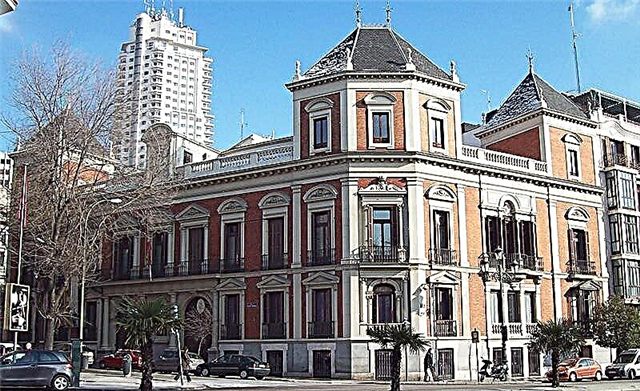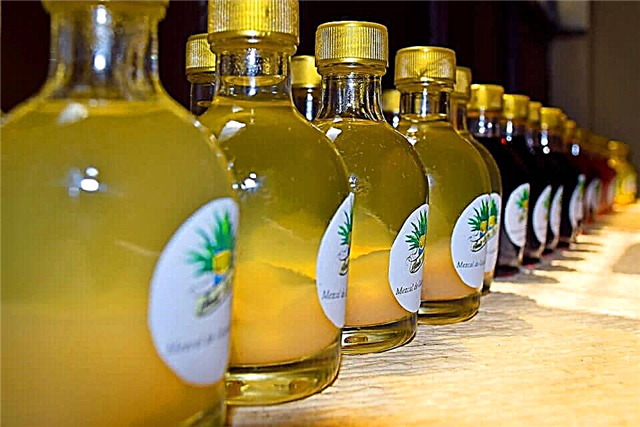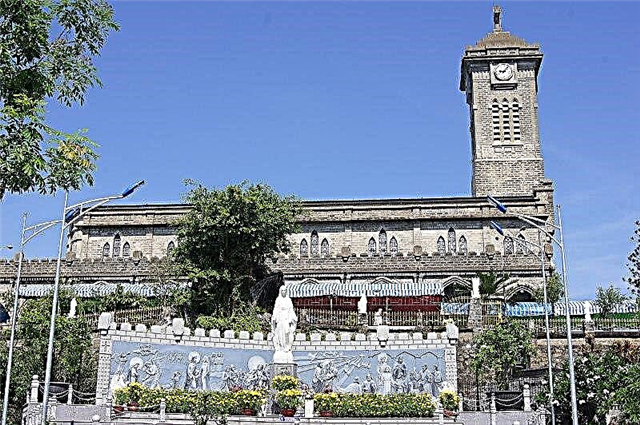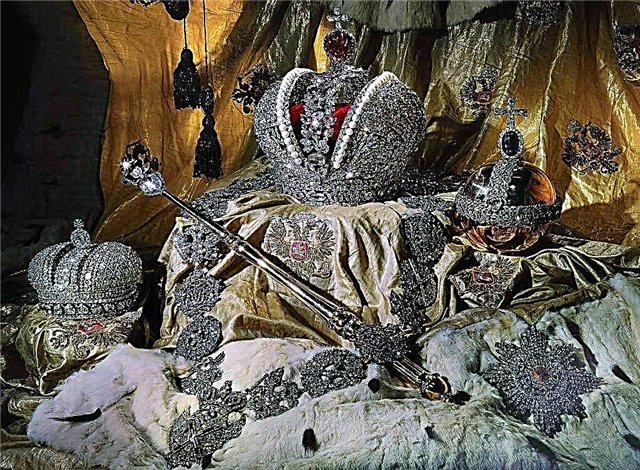The Diamond Fund is a unique exhibition of priceless exhibits located within the boundaries of the Moscow Kremlin. The exposition presents masterpieces of jewelry craft of the 18th-20th centuries, unique specimens of precious stones and samples of precious metals. Each inhabitant of the exhibition has artistic, material, but primarily historical significance. The exposition began its work in 1967 in the Armory, but the first collectible items were collected by Peter I. Now the doors of the exhibition are open for visits by all comers according to the established schedule of visits.
History

The roots of the creation of the Diamond Fund go back to the reign of Peter the Great, when, on the basis of a decree of 1719, a state organization, responsible for the preservation of imperial jewelry and royal relics, began to work. The chamber collegium possessed a complete list of orders, all kinds of adornments, gifts to tsars, state decorations. The order of their storage in St. Petersburg was also described here.
In fact, by his decree, Peter I recognized and legally defined the treasury, or, in other words, the Imperial Renteria, as the repository of the most significant values of the imperial court, belonging to many generations of royal families. During the reign of each subsequent monarch, the treasury was constantly enriched, but the contribution of Elizabeth and Catherine II was more significant. During their reign, the Russian court was remarkable for its amazing luxury and was considered one of the most magnificent in Europe.
In particular, under Catherine II, the treasury was replenished with unique samples of gems and precious stones, as well as the most important symbols of power. In 1764, in the former bedchamber of the Empress, a separate chamber was built to preserve the property, which was named the "Diamond Room", where priceless exhibits lived for a long time.

At the beginning of the First World War, the contents of the treasury were hastily transported to Moscow and placed in the Kremlin Armory. A little later, a complete inventory of the items in the collection was made, their value and great cultural significance were confirmed. In 1924, the treasury was designated as the country's Diamond Fund and transferred to the custody of the State Treasury.
First half of the 18th century
In 1719, Emperor Peter the Great issued a decree on the creation of the Diamond Room. It was supposed to contain jewelry belonging to the imperial crown. The specially created Chamber Collegium carried out an inventory of already existing values - symbols of the royal power - and determined the order and place of storage. A little later, these requirements were extended to the rest of the royal jewels. Each subsequent board made adjustments to the compiled rules.
Second half of the 18th-19th centuries
A special room was allocated for storing crown jewels. Usually it was the bedroom of the emperor or empress. Such a room became known as the Diamond or Diamond room. During the reign of women, crown jewels became especially expensive and exquisite. The bedchamber of Catherine the Great became the most expensive private office in the history of the Russian Empire. The famous architect Felten was invited to create an interior that matches the jewels.
First half of the 20th century

At the beginning of the twentieth century, the front was quite close to the capital of the empire. Therefore, it was decided to evacuate the Diamond Room to Moscow. Despite the haste, the event was held with particular care and attention to rarities. The inventory of 1898 was even saved, which later served as the basis for further research.
At this time, documents were added to the crown values:
- genealogy book of the ruling dynasty
- family members' wills
The valuables were moved to the Armory Chamber (crown hall) of the Kremlin.
Second half of XX century - early XXI century
Prior to 1967, the crown jewels were not displayed to the public. Only in November 1967, on the occasion of the anniversary of the revolution, the government decided to organize a temporary exhibition. It was shown to the guests who came to Moscow for the celebrations. It was assumed that the rarities would be exhibited for a year and then returned to permanent storage. But in a short time, the exhibition became very popular. Therefore, the government decided to organize a permanent exhibition.
By this time, the Gokhran collection received new storage units:
- diamonds found in the new deposits Mir and Zarnitsa
- works of talented jewelers of the New Time
- nuggets of gold and platinum
Along with crown jewels, the public has access to the unique Mineralogical collection, which was collected by Catherine the Great.
Diamond Fund today

The doors of the halls were opened in 1967. And although the display of the exhibits was initially supposed to be temporary, the event became the largest event in the cultural life of not only the country, but the whole world. Therefore, by a government decree, it was decided to transform the exposition into a regularly operating exhibition open to all comers.
Today the unique exposition is located in two rooms. In the first one you can see the following exhibits:
- rare specimens of precious stones
- samples of gems from all regions of the country
- jewelry masterpieces created by contemporaries
- one-of-a-kind precious metal nuggets and giant diamonds
- map of the USSR from a selection of precious stones
The second room contains exhibits of predominantly historical significance, including symbols of power and other relics. Here you can also find works of jewelry masters of the 18th - 19th centuries.
Collection of the exhibition
A collection is a collection of unique items that have not only material, scientific and artistic, but also historical value.
Here you can see:
- jewelry
- collection of precious stones
- collection of amazing nuggets
- orders
The Foundation is part of the Gokhran. This is not only an interesting exhibition. Research work is underway here. Therefore, the guided tours by the staff are extremely interesting.
Coronation regalia

Coronation regalia are rarities that, at one time, showed the wealth and importance of the empire. They are known all over the world. The collection contains:
- Great Imperial crown. It was made by jewelers in record time - in just 2 months. This is an example of grace and wealth. The crown contains about 5,000 diamonds, pearls brought from India and spinel weighing about 400 carats. Eckart and Pozier worked on the dress.
- Power. It was also made by Eckart for Catherine the Great. At first glance, this is a modest ball surrounded by a chain of diamonds.
- Small Imperial crown.
- Scepter.
- Order of the Holy Apostle Andrew the First-Called (star and chain).
- Buckle-agraph.
These items can be seen while visiting the exposition.
Mid-18th century

Experts easily distinguish the works of jewelers of this historical period. Products convey joy and light, they are characterized by asymmetry and careful execution. The gem of the exhibition is the bouquet of Empress Elizabeth Petrovna. These are flowers made of precious metals and stones - irises, forget-me-nots, daffodils and rose hips.
The stems are so thin that at the slightest movement they tremble and bend, as in a bouquet of fresh flowers. In order to fill the piece with color, the master put thin sheets of bright foil under each diamond.
A pale lilac diamond is inserted into the bud of the iris. It is a rare natural mineral. Its weight is almost 16 carats.
Second half of the 18th century

At this time, the skill of jewelers reached its climax.They skillfully handled cutting, emphasizing the natural beauty of precious stones and the play of light. Historians call the second half of the 18th century the century of the diamond. Guests do not pass by the portbouquet. It is made of gold with green enamel coating.
The role of the thread is performed by a belt of diamonds. The belt is so delicate that it creates the illusion of soft fabric. The whole composition is intended for wearing fresh flowers. The inner cavity was filled with water, which nourished real plants. The portbouquet is equipped with a fastener that securely held the product on the evening dress.
First third of the 19th century

During this period, tiaras became fashionable in the Russian Empire. They had a triangular shape, as if repeating the traditional kokoshnik. It was at this time that the products of the houses of Boucheron and Cartier became popular. Traditions survived until the beginning of the twentieth century. They entered the life of the country's high society so much that they were called Russian tiaras.
The exhibition highlights the diadem of Maria Feodorovna, the wife of Emperor Pavel Petrovich. The tiara is fully consistent with the Russian triangular kokoshnik. Diamonds are in the form of a drop, they are mobile. When the Empress turned her head, the diamonds shimmered with a bright light. The main feature of the product is a pink diamond. Its weight is over 13 carats. The gem is located in the very center of the tiara.
Historical stones

The exhibition presents 7 diamonds that are known all over the world. Among them are 4 gems and 3 diamonds. The most popular exhibit is the Orlov diamond crowning the coronation jewel - a scepter made for Empress Catherine.
The second most popular rarity is the rarest emerald of the crown of the Grand Duchess, the wife of Grand Duke Constantine. It has a mixed green and blue color. The emerald is inserted into a brooch. It is surrounded by a garland of vine leaves with diamond inserts. Presumably, the gem was found in Colombia in the 15-16th century. It was transported to Europe by the conquistadors.
Gems

The collection of the fund has a rich display of gems. Minerals boast not only uniqueness and grace, but also a complex history. Raspberry tourmaline, similar to a bunch of grapes, has consistently belonged to different royal houses. Researchers suggest that the birthplace of the rarity is Burma. Then the journey of the mineral began:
- Initially (after moving to Europe), it was the property of the wife of King Charles 9 of France.
- After the death of the owner, the mineral passed to the heir, King of Bohemia Rudolph.
- During the Swedish war, tourmaline became a war booty, and its new owner was Queen Christina.
- After the death of the monarch, the mineral remained the property of the crown of Sweden.
- During a visit to St. Petersburg, King Gustav presented a tourmaline to Empress Catherine the Great.
Diamonds

The rule is widely known to assign proper names to the found minerals, whose mass is more than 20 carats. Usually diamonds are named after some historical date, memorable event or the name of a famous person. The collection has not only material but also artistic value.
Minerals found on the territory of Russia at different times allow scientists to establish the conditions for their formation as accurately as possible. An interesting diamond is the XXVI Congress of the CPSU, which was found in 1980 in the open kimberlite pipe Mir. The rarity was named in honor of the future XXV1 Congress of the Communist Party of the Soviet Union.
Order

In tsarist Russia, the orders that were awarded to members of the imperial family were held in special honor. The best jewelers worked on the products, they used unique jewelry and the purest metals. Therefore, such orders differ significantly from similar ones. The most famous among the artifacts is the Order of the Holy Apostle Andrew the First-Called.
The award was established by Peter the Great, and until the October revolution it had the highest dignity. The Apostle Andrew was the first to come to the lands where the ancestors of the Russians lived, with a cross. His image is placed on the coat of arms of the Russian Empire. The Order of St. Andrew the First-Called became not only the highest award, but also one of the symbols of the power of the Romanov dynasty.
Nuggets

Since the 19th century, Russia has been the largest country in the field of gold mining. But the nuggets found are rarely preserved unchanged: they are sent to the smelter. The only exceptions are the largest ones: they add to the collection of rarities.
But it is important to understand: nuggets have not only material, but also scientific value. Fund employees study their composition, draw conclusions about the value of a particular deposit. They have 101 exhibits at their disposal. Visitors are attracted by the Camel nugget. Its weight is over 9 kg. It really resembles a one-humped camel. The rarity was discovered in Kolyma in the 40s of the last century.
Main exhibits

The list of the main and most impressive exhibits of the Diamond Fund includes the coronation regalia:
- Large imperial crown. Prepared for the wedding of Catherine II in 1762. The authors are the court masters Pozier and Eckart, who managed to create a masterpiece in just 2 months. The crown was considered the main symbol of power until 1917. Each new monarch was crowned with her
- Small imperial crown. Created in the image of the Big Crown in 1801 for the second half of Alexander I - Elizabeth Alekseevna
- Imperial scepter. Completed in the early 1770s by order of Catherine II
- Imperial power. Created together with the Great Tsar's Crown at the direction of Catherine II. Additional name of the regalia - "Royal apple"
- Sign and star of the order of the Apostle Andrew the First-Called. The award is considered the highest expression of gratitude for any service in Russia
In addition to the symbols of power, seven stones, whose historical significance is not questioned, deserve special attention. The list includes:
- Shah diamond over 88 carats, uncut and bearing the inscriptions of the three previous owners
- flat-type diamond of 25 carats, located in a bracelet with the image of Alexander I
- red spinel 399 ct crowning the Big Crown
- a greenish-blue tint, the 190-carat Orlov diamond that adorns the royal scepter
- emerald "Green Queen" 136 carats, placed in a brooch of Princess Alexandra Iosifovna
- 260-carat giant sapphire from the island of Ceylon, recognized as the largest on the planet
- giant chrysolite of olive greenish hue 192.6 ct
Already today, the collection of the fund has been replenished with diamonds found in the Yakut mines. The main ones are considered to be the “Great Initiative”, “Big Dipper”, “Progress”, “50 Years of the USSR” and others.
Interesting Facts

During the time of Peter the Great, security measures were also observed. The renter (room for storing crown valuables) could be opened only at the direction of the emperor. At the same time, 3 people were supposed to be present: the rentmaster, the chamber advisor and the chamber president.
The first inventory took place during the reign of Catherine the Great. Crown values have been described, measured and entered into the register.
The Diamond Room was part of the royal chambers. Nicholas 1 transferred it to the category of office premises.
After the October coup, the crown values were transferred to Gokhran by order of Lenin. For the inventory, the inventory of 1898 was used.
In 1922, a special commission worked in Gokhran. Values were described anew. Some were declared unimportant for the state. Thefts and mediocre sale of rarities began. Only in 1936, on the orders of Stalin, the barbaric actions ceased.
Excursions

You can visit the exposition only as part of an organized group of 20 people. The duration of the event is 45 minutes. During this time, an experienced guide will lead you through the halls, tell you about the relics in storage. It is impossible for Russian citizens to study the exhibition on their own.
Visiting rules
Visitors who come to get acquainted with the exposition are obliged to comply with the rules established by the administration:
- outerwear is handed over to the wardrobe, hand luggage or luggage - to the locker, weapons - to the Kremlin commandant's office
- inspection takes place only as part of an excursion (group of 20 people), foreign visitors can get acquainted with the exhibition on their own with the help of an audio guide
- entrance is by ticket
- a ticket with corrections or erasures is invalidated
- visitors are prohibited from making noise, running, drinking drinks, smoking, eating during the inspection;
- phones are recommended to be switched to silent mode
- it is forbidden to conduct video and photo shooting, sketch exhibits, record the text of the excursion (including on a dictaphone)
- it is forbidden to conduct your own excursion
- it is prohibited to litter on the territory of the exposition
- it is forbidden to bring in flammable and explosive substances, as well as items that may damage the exhibition or visitors
Citizens who disregard the established rules are subject to removal from the exhibition area.
It is recommended to purchase tickets at the box office of the Moscow Kremlin. The administration does not guarantee a visit to the exhibition with tickets purchased from third-party sites.
How to get there
The exposition is located on the territory of the Moscow Kremlin. You can get here on foot from the metro stations Borovitskaya, Aleksandrovsky Sad, Library named after Lenin ". Entrance to the Kremlin through the Borovitsky Gate. Children under 6 years old are not admitted to the exhibition. Photography and filming are prohibited here. It is also recommended to turn off your mobile phones before starting the tour.
Exhibition opening hours are from 10.00 to 17.20, except Thursday. Sessions are held at intervals of 20 minutes. Lunch break from 13.00 to 14.00. Tickets cost 500 rubles. For schoolchildren, students and pensioners, upon presentation of supporting documents - 100 rubles.
The Diamond Fund exhibition is truly considered the treasury of Russia. Here are presented unique and striking splendor jewelry, precious stones, royal regalia collected during the reign of Russian monarchs, starting with Peter the Great. The exposition continues to grow to this day, replenishing with works by contemporary jewelers and unique stones mined in the country.











